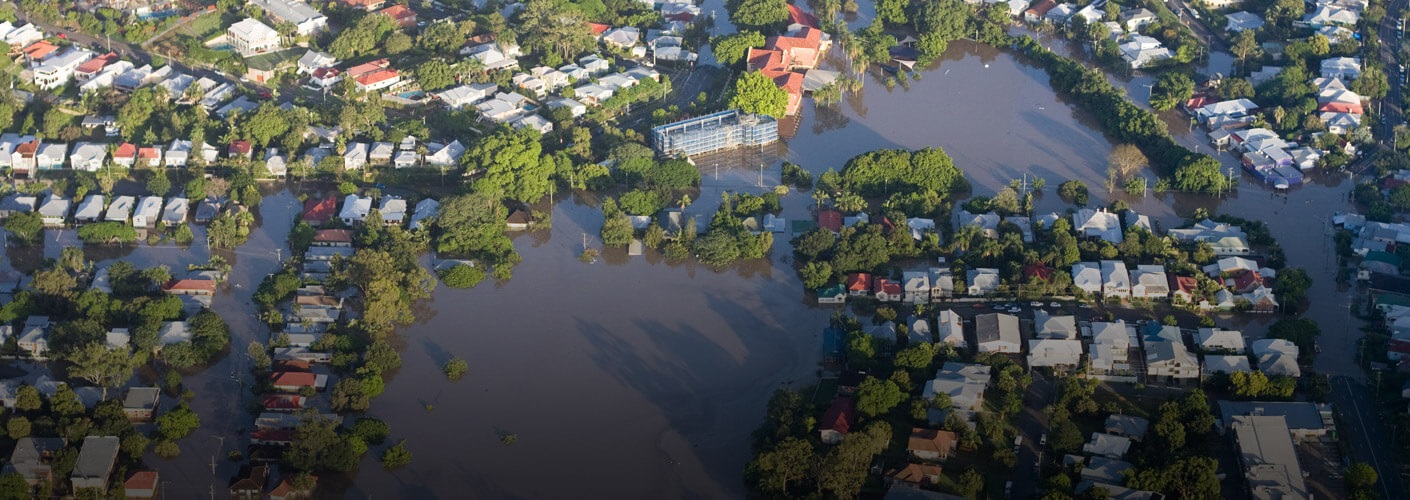Preparing your home and belongings for a flood
When planning for disasters like floods, you should:
- Move your vehicles, outdoor equipment, and chemicals or poisons to high ground.
- Sandbag your property, and indoor drains to prevent back-flow.
- Place a plastic sandbag in the toilet bowl to avoid sewage back-flow.
- Move valuables inside your home to a safer height.
- Turn off your mains supply – water, gas and electricity.
- If evacuating lock your doors/windows, and take any pets, and ID documents like birth certificates and passports with you.
- Contact the SES on 132 500 if you require assistance.
- Visit the Queensland Government’s GetReady website for more information on getting ready for floods.
Tune in to updates
Listen to your local radio station and watch TV for flood updates. This information will help you work out if the flood has passed or if you need to evacuate.
You should always avoid driving, walking, swimming or riding through floodwater, as it can be dangerous due to bacteria and disease.
Get disaster alerts affecting Queensland.
What to do after a flood
If your street or home has been flooded, do not return home until flood waters have receded and it’s safe to do so. You should also try to:
- Not turn on any appliances that have been wet
- Keep the receipts for any essentials you need to buy (e.g. clothes, bedding or food)
- Take photos of any items which could become a health and safety hazard, and throw them out
- Keep your home well ventilated to help it dry, but do not leave your home open when unattended.
- Only go back to your home if local authorities have advised it's safe to enter.
- Don’t attempt to enter your property if it feels unsafe. If urgent assistance is required, call your local SES on 132 500 and if you see an electrical risk, call Energex on 13 19 62.
- Don't allow children to play near flood waters.
- Take regular breaks, drink plenty of fluids and don’t let yourself overheat.
- Damaged or soiled items can be a health hazard, please remove to a safe area.
Starting the clean up
-
You don't need to wait for insurance assessors to start cleaning up your home.
-
Wear light clothing that keeps your skin covered and protective footwear.
-
Dispose of any food waste or other items that may be a health hazard.
-
Throw out items that have been damaged (but get a photo first) – things like wet carpets, curtains and other damaged goods. If possible, retain a sample of the materials and record serial or model numbers from appliances.
-
Reach out to your insurer, as there may be some short term support available.
Vehicle tips
-
If your vehicle has had water in the interior, do not start or drive it.
-
If water has not entered the interior, but has inundated the engine bay (headlight height) or the exhaust, do not start or drive it.
-
Where possible, take images of the exterior (showing the water line if visible) and interior (through windows is fine).
-
If safe to do so, remove personal items including toll tags and garage remotes, leaving logbooks in the vehicle.
Know whether you're in a flood risk area
Are you in a flood prone area? Contact your local Council to view the flood mapping for your area.
There are three types of floods that typically occur in Queensland – flash, quick onset (mountain or coastal river) and slow onset flooding (inland rivers).
Things to note
The information in this article has been prepared for general information purposes only and is not intended as legal advice or specific advice to any particular person. Any advice contained in the document is general advice, not intended as legal advice or professional advice and does not take into account any person’s particular circumstances. Before acting on anything based on this advice you should consider its appropriateness to you, having regard to your objectives and needs.
